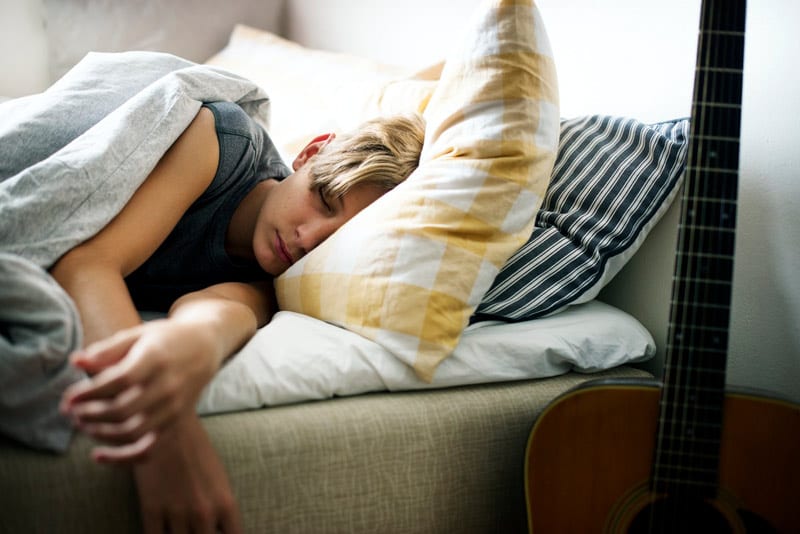Attention deficit hyperactivity disorder (ADHD) is a serious condition that affects around 6.1 million children between the ages of 2 and 17 years old in the United States alone. This translates to 9.4% of children in that age group, highlighting how prevalent the chronic condition has become.
But what’s worrying an increasing number of parents is that children might be misdiagnosed with ADHD when the real problem could be a sleep disorder. Given ADHD’s impact on mental and social functioning and the treatments involved, that’s very understandable.
How common are these errors, and why are ADHD and sleep disorders so easy to confuse?
Similarity of Symptoms for Sleep Disorders and ADHD
Many of the symptoms common to ADHD in children (or even adults) are also linked to insufficient sleep. These symptoms include poor impulse control, organizational skills, memory, and concentration.
When the issue is due to a sleep disturbance and not an attention disorder, the root cause might be:
- Depression
- Trauma
- Anxiety (intrusive thoughts disturbing sleep can be just as much of a problem in children as adults)
- Nightmares and night terrors
- Sleep apnea
- Restless leg syndrome, which involves unpleasant sensations in the lower limbs and can cause kids to wake up several times during a single night
When Sleep Apnea Manifests As ADHD
For those who suffer from sleep apnea, their breathing pauses for so long that their bodies wake them up to prevent asphyxiation. This involuntary action is lifesaving, but it results in thousands of microsleeps every night – usually just a few seconds long – rather than one continuous, unbroken rest.
Microsleeping’s continuous pattern causes the individual to be exhausted the next day, potentially leading to increased behavioral and attention problems in children compared to other sleeping disorders. One study published in 2013 found that obstructive sleep apnea rates correlated with higher incidences of learning disabilities, aggression, communication problems, and hyperactivity.
Another large-scale study reviewed over 11,000 children and found that those with sleep-disordered breathing had significantly more trouble interacting with their peers, showed signs of hyperactivity, and had difficulty following rules and other conduct issues.
The researchers also noted that compared to their peers who didn’t experience this type of disordered breathing, young children who experienced sleep-disordered breathing were 40-100% likelier to develop behavioral issues. These behavioral patterns looked similar to ADHD and were firmly established by the time the child turned seven.
Are Pediatricians Missing the Mark?
If the symptoms of sleep disorders and attention deficit hyperactivity disorder are so similar, how can we begin to tell them apart? And can we trust pediatricians to do this?
While healthcare professionals usually have children’s best interests at heart, evidence suggests that the answer, sadly, is not necessarily.
Pediatricians often don’t receive any formal training in assessing and treating sleep disorders – apnea or otherwise – and those with less education in this area may consider the sleeping disorders to be less of an issue, so they’re unlikely to diagnose them correctly.
A Chicken and Egg Situation
Sleep disorders and ADHD can be difficult to distinguish because they exacerbate each other. A child with ADHD has higher energy levels than a child without and will find falling asleep a lot harder. On top of that, ADHD medication, especially if taken too late in the day, can disturb natural cycles of feeling alert and tired.
In this case, ADHD is the root cause of sleep issues. However, whatever the reason for youngsters not getting enough shuteye, the fact is that when they don’t, they display more ADHD-like behaviors. And if they do have the disorder, the exhaustion will exacerbate their symptoms.
Parents can feel like they’re chasing their tails as they battle to figure out which came first.
What Can You Do?
Any situation where your child is distressed, not coping, or struggling to sleep is likely to make you feel anxious or concerned. However, there are several steps you can take to address the issue and pinpoint the root cause.
The first thing to remember is that you are your family’s biggest advocate and are in the best position to gather the necessary information.
Take careful notes of your child’s sleeping patterns. Note when he or she seems to sleep and wake up, as well as what affects the cycles. A good example is exercise. Those without ADHD are not only less stressed after exercising; they find it easier to fall asleep, too.
Social factors can also affect the amount or quality of sleep children get. If they’re anxious about an exam, dealing with bullying, or stressed about family matters, they may not be getting the rest they need. If children appear tired and are exhibiting ADHD-like symptoms, ask them about their concerns or what’s bothering them. They may simply be struggling to sleep, and this is affecting their behavior.
Wherever possible, you should also try to note how the foods they eat affect their actions. Caffeine and foods high in protein and sugar can aggravate the symptoms of ADHD. These foods all act as stimulants, making restlessness or a lack of focus far worse.
Some experts point to the correlation between diagnosed ADHD cases and the use of personal technology such as tablets and smartphones. The use of such devices has been on the rise since the 1990s. Set boundaries around screen time, especially before and while in bed, and evaluate how that affects sleep cycles and waking behavior. If both improve, you may not be dealing with ADHD.
However, the important message here is that you can’t make this diagnosis alone. It is best to talk to professionals you can trust.
Skilled clinicians will exercise caution and be conservative in their diagnosis of ADHD, ruling out enlarged adenoids and tonsils or other medical conditions along with new stressors that could be causing the issue. You need to collaborate and work as a team to get the best results.
Remember that attention deficit hyperactivity disorder is a very real issue. If it affects your child, it needs to be dealt with by experienced professionals who can prescribe the right medications and other treatments. Your job is to make sure you find clinicians who know what they’re doing and have their patients’ best interests at heart.
If you or someone you know experiences mental health issues, it is important to seek help from a qualified professional. Our Resource Specialist can help you find expert mental health resources to recover in your community. Contact us now for more information on this free service to our users.
About the Author: With a background in holistic medicine, Amelia Palmer is an experienced writer covering a variety of topics. When she’s not writing, you can find her volunteering at her local animal shelter or the dog park with her two rescues, Bandit & Belle.
Image by www.rawpixel.com
The opinions and views expressed in any guest blog post do not necessarily reflect those of www.rtor.org or its sponsor, Laurel House, Inc. The author and www.rtor.org have no affiliations with any products or services mentioned in the article or linked to therein. Guest Authors may have affiliations to products mentioned or linked to in their author bios only.
Recommended for You
- Veterans and Addiction Recovery: How Families Can Support Their Service Member’s Healing Journey - July 14, 2025
- Trauma-Aware Yoga: A Gentle Path to Healing and Recovery - July 10, 2025
- Why Eating Disorders in Men Are Often Missed - July 3, 2025





